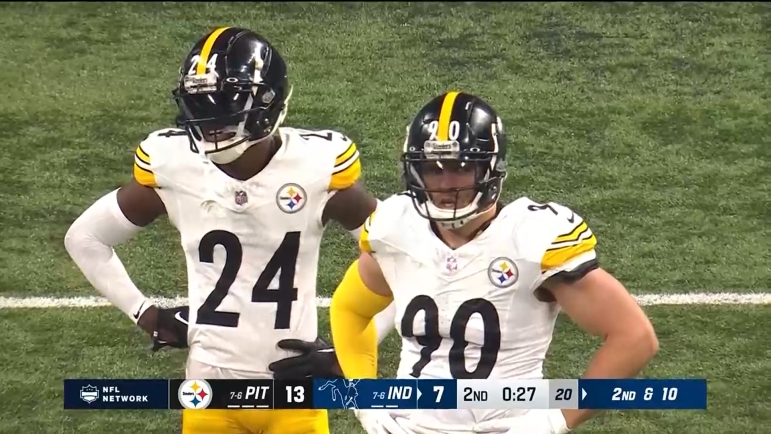While the Steelers have invested significantly via trade and free agency in outside additions, they’re more homegrown than it seems. In fact, I initially anticipated writing the opposite article that I’m about to, but the roster told me differently. Evaluating the Steelers’ projected starting lineup, this is still mostly a team they have built from within.
Perhaps the reason for the perception to the contrary is primarily due to big moves in important areas. the Steelers went from Kenny Pickett to Russell Wilson to Aaron Rodgers at quarterback, for example. This offseason, they added two legendary cornerbacks in Darius Slay and Jalen Ramsey. But if you look at the trenches, especially, these are Steelers players.
The offensive line, for example, features four projected, and recent, homegrown starters. Isaac Seumalo is the lone exception, but the rest of the Steelers’ line is comprised of draft picks since 2023. There’s Broderick Jones and Troy Fautanu at tackle, Zach Frazier at center, and Mason McCormick at right guard.
Beyond that, the Steelers have homegrown featured skill players in TE Pat Freiermuth, RB Jaylen Warren (or Kaleb Johnson), and Calvin Austin III and Roman Wilson. Depending on how you count the starters, that’s seven homegrown starters on offense, if not eight. And for all we know, Darnell Washington will outsnap Jonnu Smith.
Defensively, the Steelers have made some significant outside additions, granted. There’s Patrick Queen at ILB, Slay and Ramsey at CB, and DeShon Elliott and Juan Thornhill at S. But even here, they have a fully homegrown defensive line with Cameron Heyward, Keeanu Benton, and Derrick Harmon. They have two stud pass rushers with T.J. Watt and Alex Highsmith, plus homegrown depth. And let’s not forget CB Joey Porter Jr.
If we add all that up, that’s still six defensive starters whom the Steelers drafted and developed. Even if you don’t count both Benton and Harmon, accounting for a base nickel, that’s still five. In the most conservative reading of the Steelers’ starting lineup, they have 12 of 22 homegrown starters. And that number grows if you expand to the major role players like second or third tight ends, the third defensive lineman, etc.
So, sure, the Steelers have relied to an uncharacteristic extent on acquiring starting talent through veteran acquisition. For the past 50-plus years, that is very much not how they have built their rosters. But they aren’t buying their rosters—they’re supplementing them. This isn’t a “Dream Team”, as I’ve seen mentioned lately, but merely a shrewd use of every available tool.
That’s what good teams do. That doesn’t mean it will work out for the Steelers—it would stand a much better chance if they had the Aaron Rodgers of five years ago—but they are making good-faith efforts to put together the best possible roster they can manage under the circumstances.
The Steelers have prioritized the offensive and defensive lines most recently, and those areas are almost entirely homegrown. These young talents still have a lot to prove, but there is a lot of potential, which merits optimism. And I think it’s worth adding that they’re using good at finding the “Steelers players”, even among veterans. DeShon Elliott may not have spent his whole career here, but he carries himself as if he had.








